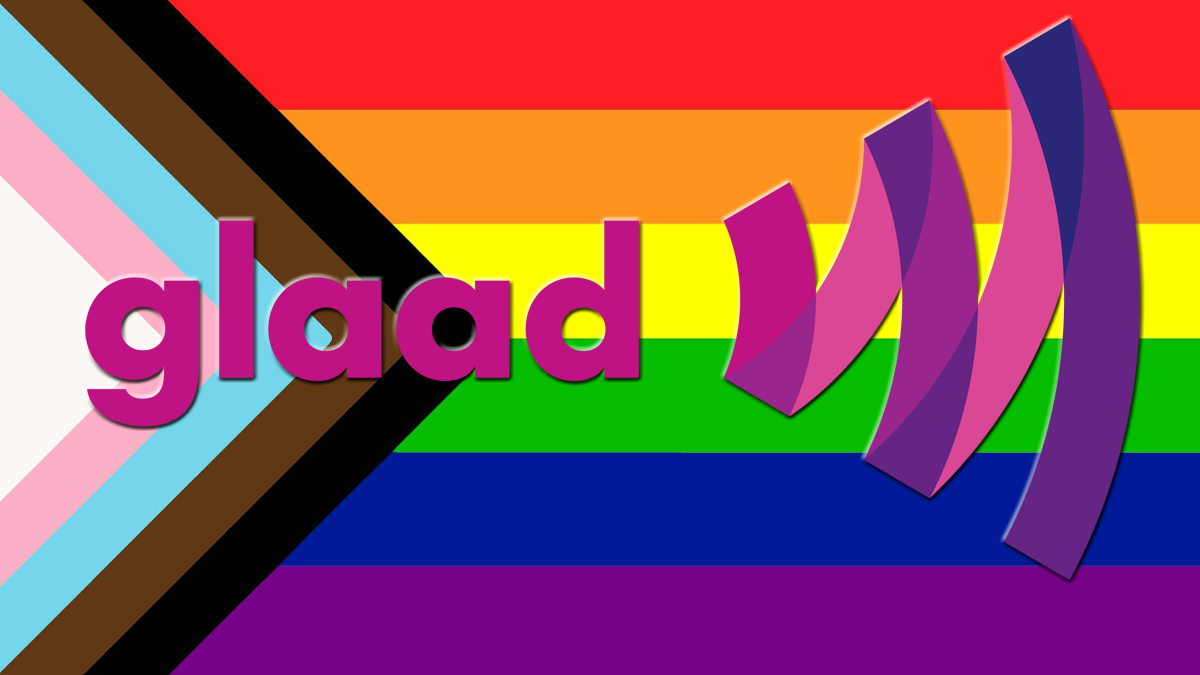What Does GLAAD Stand For? The Media Monitoring Group’s Name and Mission, Explained
Because words and images matter.

Prior to the 1980s, representation of LGBTQ people in mainstream media was rare. When LGBTQ people appeared in news or works of fiction, the depictions were often overwhelmingly problematic if not downright homophobic. One reason that has gotten better over the past thirty-plus years is the founding of GLAAD in 1985.
GLAAD’s Origin Story
During the 1980s, the horrific HIV/AIDS epidemic ran rampant through LGBTQ+ communities. The sheer amount of cases and deaths forced news outlets to acknowledge the disease and report on the crisis. However, reports used terms that many found homophobic and disrespectful to the victims they were supposed to be reporting on. In 1985, a group of activists, many from the New York State Council on the Arts, banded together to do something about it. They formed GLAAD to pressure the media into using more neutral terms and less sensationalism when reporting on the AIDS crisis.
GLAAD was originally known as the Gay and Lesbian Anti-Defamation League. Soon the name changed to the “Gay & Lesbian Alliance Against Defamation.” The abbreviated term GLAAD became the call-sign of the organization. In 2013, they dropped the longer, former title as to not exclude bisexual and transgender people from GLAAD’s mission. Now known only as GLAAD, they strive for proper representation of LGBTQ people in all types of media.
GLAAD’s Expansion
Founded in New York, GLAAD soon expanded to Los Angeles. With a foot in Hollywood, GLAAD moved to not only redefine the LGBTQ images in the news but also pop culture. For the first time in history, GLAAD pushed the entertainment industry to come to terms with how LGBTQ people were depicted in their projects.
In 1989, GLAAD started its own annual media awards. The ceremonies take place in New York City, Los Angeles, and San Francisco. Currently, the awards recognize a range of categories. They span from Outstanding Film, Kids and Family Programming to Music Artist, Blog, Newspaper, Comic Book, Video Game, with many others in between. These awards showcase and give kudos to those who create more all-inclusive media.
Over the years, GLAAD has expanded even further than the standard media narrative. They created several programs and initiatives to further impact cultural norms. In 2002, GLAAD started the Announcing Equality Project. This project ensured newspapers printed LGBTQ wedding announcements alongside straight wedding announcements.
GLAAD began an annual Studio Responsibility Index to show the representation of LGBT in films made by the major motion picture studios. This index rates quantity, quality, and diversity. Similarly, in 2021, GLAAD also started an index of Social Media Safety. Their findings showed social media was unsafe for LGBTQ users.
There is no sign that GLAAD is slowing down its efforts. In October 2021, GLAAD teamed up with other LGBTQ organizations and corporations for a hugely successful Spirit Day. The day was special for LGBT youth, who disproportionately face bullying. Spirit Day created a way for people to show solidarity with LGBTQ youth and stand against bullying. They encouraged participants to wear purple to signal their support. #SpiritDay flooded social media.
There still is a long way to go with LGBTQ representation in popular culture. Yet most of the progress we have seen since the eighties is because of GLAAD’s tireless efforts. Their work has helped shift the media’s narrative of LGBTQ people. As GLAAD says, words and images matter.
(featured logo: glaad.org)
Have a tip we should know? [email protected]